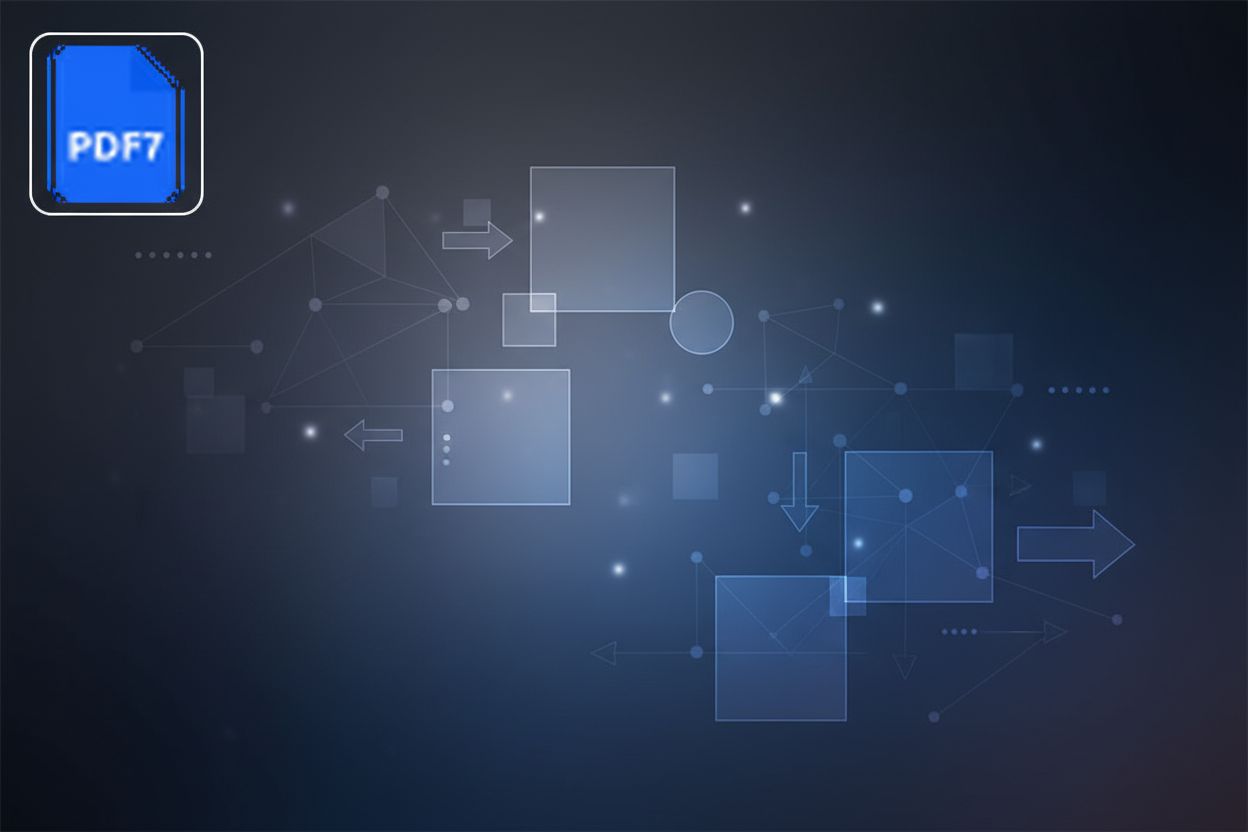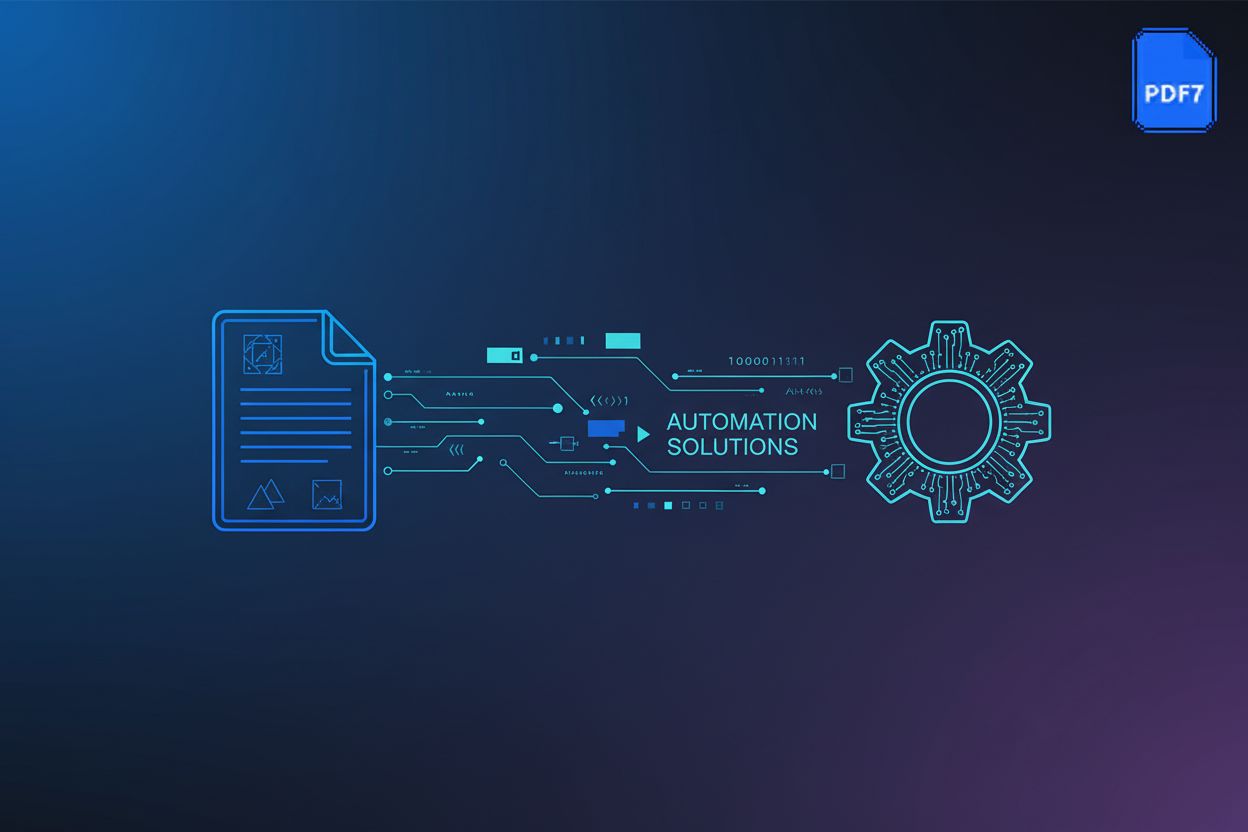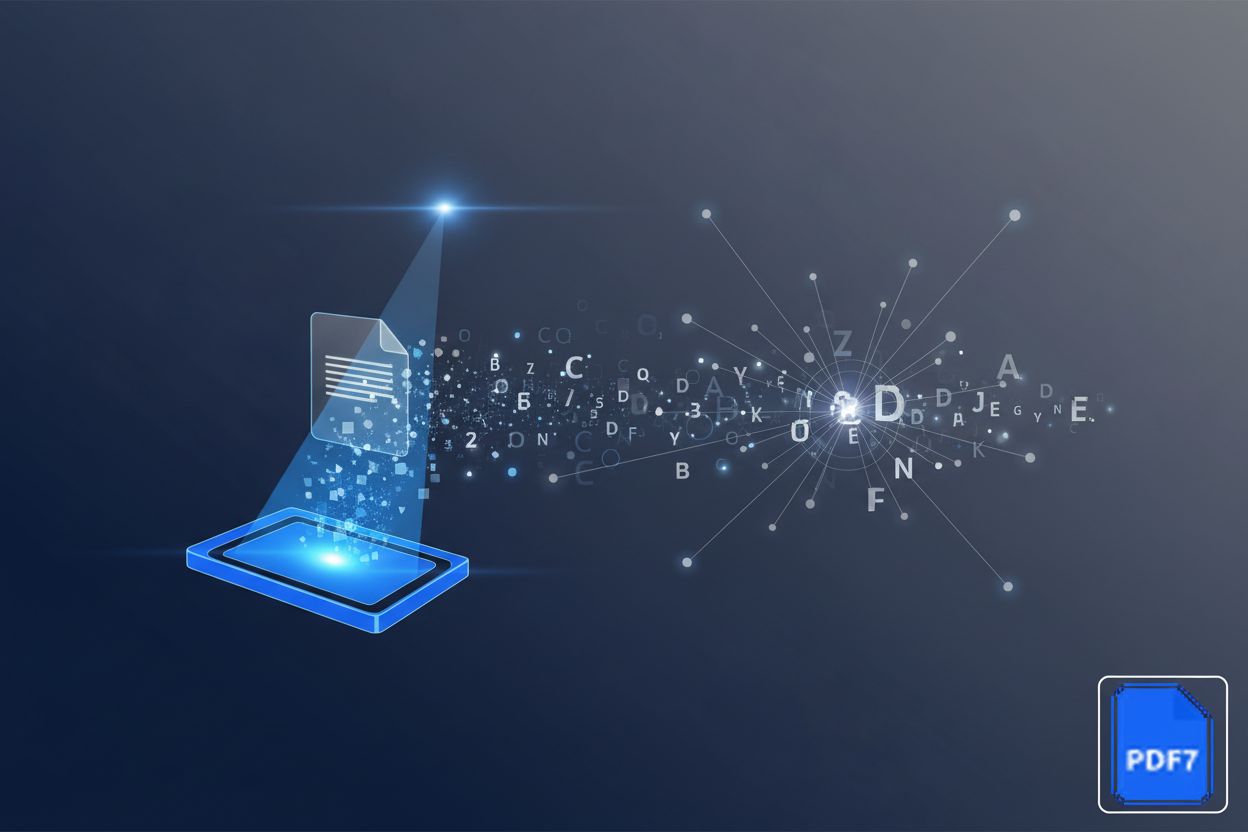PDF Rasterization and Vectorization: A Comprehensive Guide
Understanding Raster and Vector Graphics
Did you know that the images you see are built in fundamentally different ways? These differences impact how they look and how you can use them. Let's dive into the contrasting worlds of raster and vector graphics.
Raster graphics are like digital paintings, composed of tiny squares called pixels.
- Think of a photograph: it's a grid of colored pixels that come together to form the image. Common file types include JPG, PNG, and GIF.
- Raster images are resolution-dependent, meaning their quality decreases as you enlarge them.
- You'll see this as pixelation, where the individual squares become visible Rasterizing PDF vector objects - Acrobat.
- While great for complex images like photos, raster files tend to be larger than vector files. They're ideal for web graphics and digital art where precise scaling isn't the main concern.
Vector graphics take a different approach, using mathematical equations to define shapes, lines, and curves.
- Imagine the logo of a company: it's often created as a vector graphic. Common file types include SVG, AI, and EPS.
- Vector images are resolution-independent, so they maintain their quality no matter how much you scale them.
- This makes them ideal for logos, illustrations, and text that need to look sharp at any size. Think about designs for t-shirts, billboards, or CAD drawings.
- Vector files are generally smaller, but can become large with complex details.
Choosing between raster and vector depends on the specific use case.
- Raster: Pixels, resolution-dependent, photos, larger file sizes. Great for web graphics.
- Vector: Equations, resolution-independent, logos/text, smaller file sizes. Perfect for print design and scalable graphics.
- If you need to edit a photo, raster is the way to go, but if you are designing a logo, vector is the better choice.
Now that you understand the basics of raster and vector graphics, let's explore how these concepts relate to PDF rasterization and vectorization.
Rasterization: Converting Vectors to Rasters
Ready to transform your PDFs? Rasterization is the process of converting vector graphics into a pixel-based format, and it's a crucial step in many document workflows. Let's explore how it works and why it matters.
Rasterization transforms vector graphics into a pixel-based image. This involves converting the mathematical descriptions of shapes and lines into a grid of colored pixels. It's essential for displaying vector graphics on raster-based displays like computer monitors and printers. Without rasterization, these devices wouldn't be able to render vector images correctly.
The process involves sampling the vector image at a specific resolution. The higher the resolution, the more pixels are used to represent the image, resulting in a sharper and more detailed rasterized output.
Here's why rasterization is so important:
- Compatibility: Rasterization ensures consistent appearance across different PDF viewers and platforms. By converting vectors to pixels, you eliminate potential rendering differences caused by varying software or hardware. This is especially helpful when sharing documents with people who might use different PDF readers.
- Flattening: It simplifies complex PDFs with transparency or layered elements. Rasterization merges these layers into a single, flat image. This is necessary because raster displays can't inherently handle transparency or layers the way vector graphics can; they need a definitive color for each pixel. Flattening prevents display issues that can arise from these complexities.
- Printing: Rasterization prepares files for printing on devices that require raster input. Some older printers or specialized printing workflows may not directly support vector graphics, so converting to pixels ensures they can be printed.
- Security: Rasterizing can prevent editing of the PDF content. Once text and vector shapes are converted to pixels, they become more difficult to modify or extract.
However, there are downsides to rasterization:
- Loss of scalability: Rasterized PDFs lose their resolution independence. As noted earlier, scaling a raster image results in pixelation and loss of quality.
- Increased file size: Rasterization can increase file size, especially for complex vector graphics. The pixel data required to represent the image can be larger than the original vector description.
- Reduced editability: Text becomes an image, making it unsearchable and uneditable. This can be problematic if you need to modify the content of the PDF later.
- OCR Challenges: Rasterized text reduces OCR accuracy. Optical Character Recognition (OCR) software struggles to recognize text in raster images compared to vector-based text.
Understanding these trade-offs is key to deciding when rasterization is appropriate. Next up, we'll discuss vectorization, the opposite process of converting raster images back into vector graphics.
Vectorization: Converting Rasters to Vectors
Turning a blurry photo into a crisp graphic might seem like magic, but it's actually vectorization at work. This process redraws raster images as vector graphics, offering major advantages in scalability and editability.
Vectorization converts raster images into vector graphics. The process involves tracing the outlines of shapes in the raster image and converting them into mathematical paths. Vectorization can be done manually, using drawing tools, or automatically, with specialized software.
Here's why you might want to vectorize:
- Scalability: Vectorization enhances scalability, which is especially useful for logos, illustrations, and diagrams. You can enlarge a vectorized image without losing quality, making it perfect for various uses, from business cards to billboards.
- Editability: Vectorizing enables editing of text and shapes within a PDF. Rather than being stuck with flattened images, you can modify the individual elements as needed.
- Smaller File Size: Vector images often have smaller file sizes than raster images, particularly for graphics with large areas of uniform color. This can make sharing and storing files more efficient.
- Improved OCR: Vectorized text can improve OCR accuracy. Optical Character Recognition (OCR) software can more easily recognize and extract text from vector-based images, which can be a big efficiency boost. According to Procore, vector content leads to the most accurate results when using OCR technology.
While vectorization offers many benefits, it also presents challenges.
Fully automatic vectorization of photographs is difficult and often results in poor quality. The accuracy of the vectorized image depends on the quality of the original raster image and the vectorization algorithm. Vectorizing complex raster images can produce very large vector files. Balancing visual fidelity with manageability is an ongoing challenge Layered Image Vectorization via Semantic Simplification.
The concept of "semantic simplification" is relevant here because it refers to the process of understanding the meaning or intent behind an image's elements, not just their visual appearance. For automatic vectorization to work well, especially with complex images like photos, the software needs to "understand" what constitutes a distinct shape or object, rather than just tracing every pixel boundary. This is much harder than it sounds, hence the difficulty with photos.
Understanding these challenges helps manage expectations and choose the right tools for the job. Next, we'll explore some tools and techniques for both processes.
Tools and Techniques for Rasterization and Vectorization
Ready to explore the toolbox? Choosing the right tools and techniques is crucial for effective PDF rasterization and vectorization.
Several software options can help you convert vector-based PDFs into raster images:
- Adobe Acrobat: This is a go-to for many PDF tasks. You can use it to flatten and rasterize PDFs. For example, to rasterize, you'd typically go to "File" > "Export To" > "Image" and choose your desired raster format (like JPG or PNG). You can also use the "Preflight" tool for more advanced control, which allows you to specify resolution and color settings for rasterization. A user in the Adobe Product Community sought to rasterize vector objects without affecting text, highlighting the need for precise control: Rasterizing PDF vector objects - Acrobat.
- PDF Processing Tools (PDF7): These offer a suite of functionalities, including conversion options that can involve rasterization. We'll touch on this more later.
- Image editors like Photoshop and GIMP: These can open PDFs and save them as raster images. When you open a PDF in Photoshop, it prompts you to specify the resolution, color mode, and other rasterization settings. This is useful for detailed editing and manipulation of pixel-based content.
If you need to convert raster images back into vector graphics, consider these options:
- Adobe Illustrator: This is a powerhouse for vector work. It provides powerful image tracing capabilities. You can import a raster image, then use the "Image Trace" feature. You'll have various presets (like "Black and White Logo" or "High Fidelity Photo") and advanced options to fine-tune how the software traces the image, converting it into editable vector paths. According to Adobe, Illustrator on the iPad lets you convert raster images, or sketches (JPEG, PNG, PSD, and more) to vector art with the Vectorize tool. Vectorize images on the iPad
- Vector Magic: This is dedicated raster-to-vector conversion software. It's known for its accuracy and offers precise control over the vectorization process, allowing you to adjust parameters like edge smoothness and color grouping.
- Online Vectorization Tools: Many websites offer quick and easy conversion. You upload your raster image, and they provide a vector file. However, consider the privacy implications when uploading sensitive documents to online services.
Achieving the best results often requires more than just running the software. Here are some optimization techniques:
- Adjusting settings: In rasterization/vectorization software, you can usually tweak settings like resolution, color depth, and detail levels. Experimenting with these lets you find the right balance between quality and file size for your specific needs.
- Pre-processing: Improving the quality of the original image before vectorization can make a huge difference. Sharpening blurry images or using noise reduction filters can significantly enhance the final vector output.
- Manual cleanup: Even with the best software, automatic vectorization can sometimes create imperfections. Manual cleanup in a vector editor like Illustrator allows you to correct jagged lines, stray points, or incorrect shapes, ensuring a polished, professional result.
Choosing the right tools and techniques ensures your PDFs are optimized for their intended use, whether it’s for compatibility, scalability, or editability. Next, we'll explore how these processes apply in document processing.
Applications in Document Processing
Rasterization and vectorization aren't just theoretical concepts; they have practical implications for how we manage and interact with documents every day. These processes play a crucial role in optimizing PDFs, ensuring cross-platform compatibility, and preserving document integrity.
Rasterization and vectorization are valuable tools for PDF optimization.
- Rasterization can reduce file size when a PDF contains complex vector graphics, which simplifies the file structure for easier web viewing. For instance, a PDF with intricate CAD drawings might be rasterized to a lower resolution for faster loading on a website.
- Vectorization can improve performance by converting scanned documents (which are essentially raster images) into editable and searchable PDFs. This makes them more efficient for use in document management systems.
These techniques also enable seamless document conversion.
- Vectorization is essential for converting scanned documents into editable PDFs, allowing users to modify and search the content. Imagine scanning an old book; vectorization (often with OCR) makes its text usable.
- Rasterization ensures that documents appear consistently across diverse platforms, which eliminates rendering issues caused by software or hardware differences. This is why sometimes you might rasterize a PDF to a high-resolution image before sending it to a printer to guarantee it looks exactly as intended.
Rasterization and vectorization contribute significantly to digital archiving.
- Rasterization can prevent unauthorized modifications to archived documents, thereby preserving their integrity over time. By turning everything into pixels, it acts like a snapshot, making it harder to alter the original content.
- Converting documents to standard raster formats ensures long-term accessibility, regardless of future software or hardware changes. While vector formats are great, a universally compatible raster image format might be a safer bet for very long-term archival.
The decision to use either depends on the specific goals of your document processing workflow. As you'll see in the next section, understanding how these processes affect security is also key.
PDF Security and Rasterization/Vectorization
Data breaches are a growing concern, and securing PDF documents is more critical than ever. Rasterization and vectorization can play a role in protecting sensitive information.
Rasterization offers a straightforward way to enhance PDF security.
- Rasterizing text converts it to an image, which makes it difficult to copy or edit. This is particularly useful for documents containing sensitive information, such as legal contracts or financial statements. If someone can't select the text, they can't easily copy it.
- Flattening layers reduces the risk of unauthorized modifications. By merging all layers into a single image, rasterization prevents users from altering individual elements within the PDF. This is important for maintaining the integrity of important records, like official forms.
Watermarks are another layer of security that can help protect your PDFs.
- Vector watermarks can be added to PDFs, providing a scalable and non-intrusive way to protect copyright. Because they are vector-based, these watermarks remain crisp and clear regardless of zoom level or print size.
- Watermarks can be rasterized as part of the PDF content to further discourage removal. This makes it more challenging for someone to simply delete the watermark, adding an extra layer of protection.
While rasterization and vectorization can improve PDF security, they are not foolproof solutions.
- Rasterization is not a foolproof security measure. OCR technology can still extract text from rasterized images, so this method is not suitable for highly sensitive data. OCR works by analyzing the shapes of characters in an image and matching them to known letterforms. Even though it's an image, if the characters are clear enough, OCR can often convert them back to editable text.
- Vectorized content can be edited, so additional security measures (e.g., password protection, digital signatures) may be necessary. It's essential to use a combination of techniques to ensure comprehensive document security.
Choosing the right security method depends on your specific needs and the sensitivity of the document. Now, let's wrap up by summarizing the key considerations when deciding between rasterization and vectorization.
Key Considerations: Rasterization vs. Vectorization
Deciding whether to rasterize or vectorize your PDF content boils down to your primary goals. Here's a quick recap to help you make the right choice:
Choose Rasterization When:
- Preserving Appearance is Paramount: You need the document to look exactly the same everywhere, regardless of the viewer's software or hardware. Think of final print-ready files or documents with complex visual effects that might not translate well to vectors.
- Security Through Immutability is Needed: You want to make content difficult to edit or copy, like sensitive financial reports or legal documents. Remember, it's not foolproof due to OCR, but it's a good deterrent.
- Compatibility with Raster Devices: You're preparing a document for a printer or device that primarily handles pixel-based data.
- Working with Photographic Content: Photos are inherently raster images, so if your document is primarily image-based, rasterization is the natural choice.
Choose Vectorization When:
- Scalability is Essential: You need graphics, logos, or text to remain sharp and clear at any size, from a business card to a billboard. This is crucial for branding and design work.
- Editability is Required: You or others need to be able to easily modify text, shapes, or other elements within the PDF later on.
- Smaller File Sizes are Desired: For graphics with large areas of solid color or simple shapes, vector files are often much smaller than their raster counterparts.
- Improving OCR Accuracy is a Goal: You want to make scanned documents searchable and editable, which vectorization (often combined with OCR) facilitates.
Think About the Trade-offs:
- Rasterization: Sacrifices scalability and editability for consistent appearance and basic security. Can increase file size.
- Vectorization: Offers scalability and editability but might not perfectly replicate complex raster effects and can be challenging for photographic content.
Ultimately, the best approach often involves understanding the specific content of your PDF and its intended use. Sometimes, a combination of both techniques might even be necessary for different parts of a document.
Enhance Your PDF Experience with PDF7
Ready to take your PDF management to the next level? PDF7 offers a suite of tools designed to simplify and enhance your experience with PDF documents.
PDF7 provides a comprehensive set of online tools to manage and optimize your PDFs, eliminating the need for downloads or installations. Whether you're a student, a professional, or anyone who works with PDFs, PDF7 can simplify document processing tasks. With features ranging from basic edits to advanced conversions, PDF7 equips you with the solutions needed to boost your productivity.
- Convert: Seamlessly convert PDFs to various formats, including Word, Excel, JPG, and PNG, and vice versa. When converting to JPG or PNG, PDF7 is performing rasterization. This ensures compatibility across different platforms and devices.
- Edit: Rotate, remove pages, and reorganize your PDFs to tailor them to your specific needs. These editing capabilities enhance readability and usability.
- Compress: Reduce file sizes without compromising quality, making it easier to share and store your documents. This can sometimes involve rasterization of certain elements for optimization.
- Protect: Secure your sensitive information with password protection and unlock capabilities, ensuring your PDFs remain confidential.
- Visit PDF7.app to access the online tools.
- Select the desired function from the user-friendly interface.
- Upload your PDF document and follow the simple instructions to complete your task.
- Download the optimized or converted PDF instantly, ready to share or archive.
With PDF7, managing your PDFs has never been easier. Take advantage of its versatile tools to streamline your workflow and enhance your document processing capabilities.








